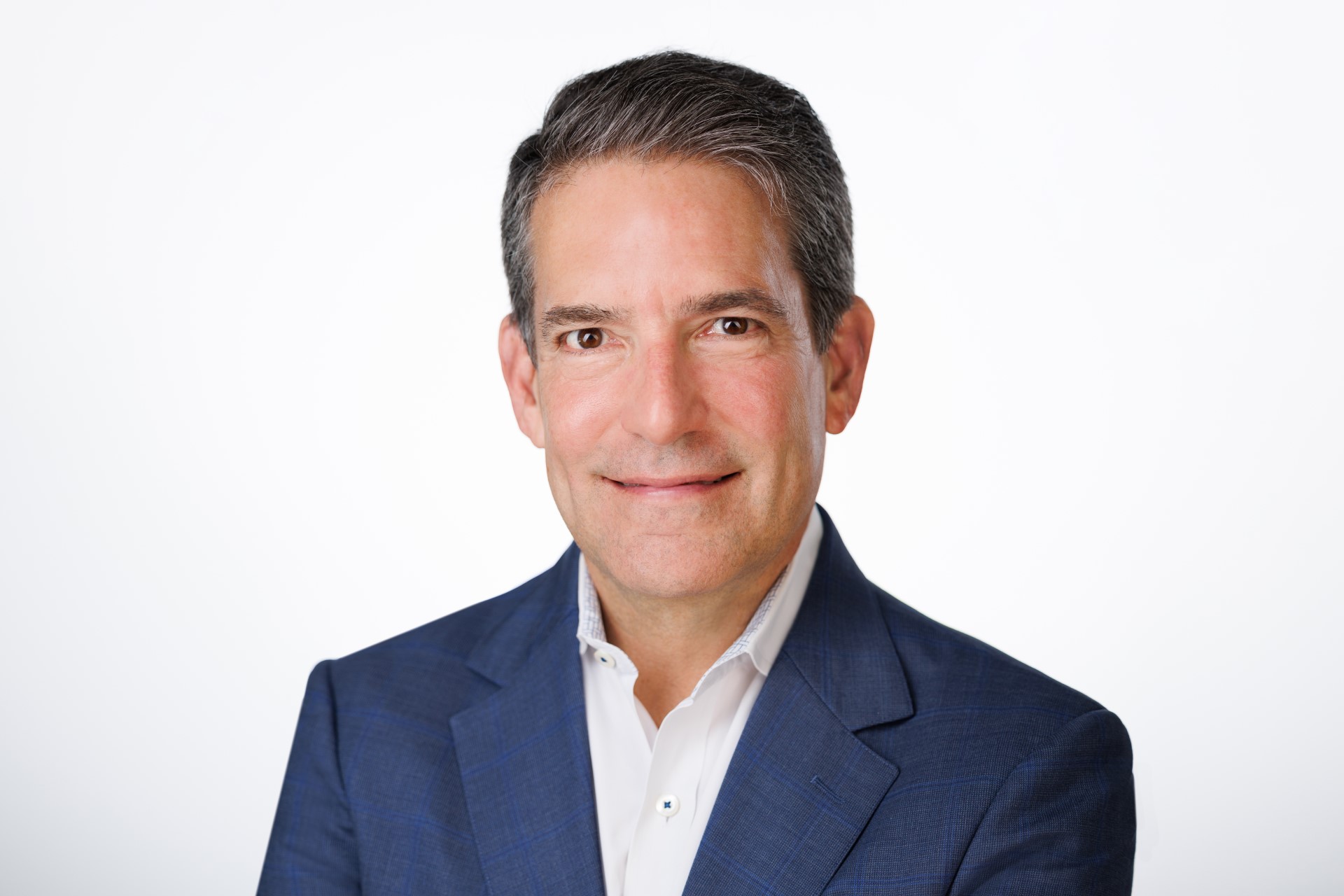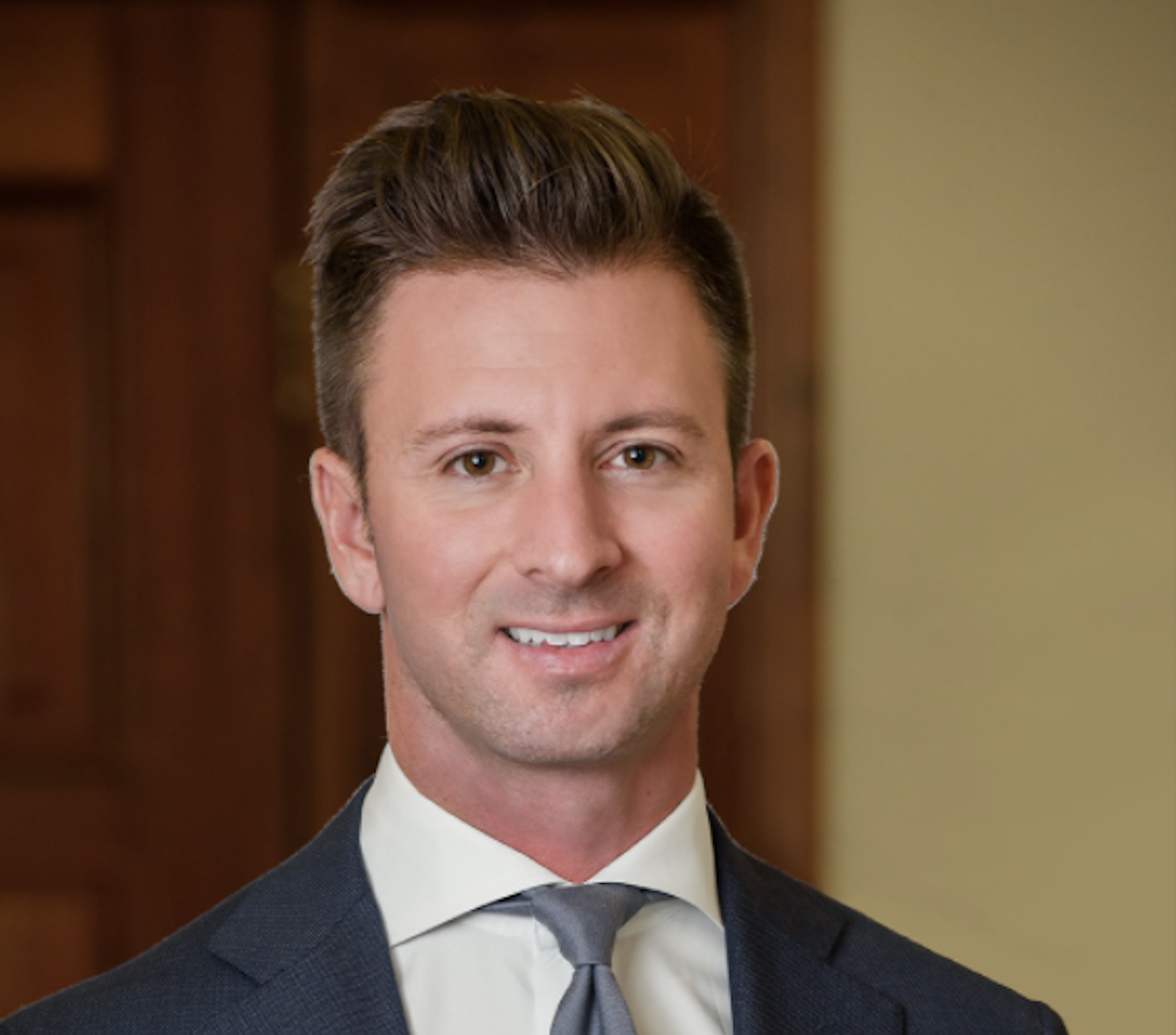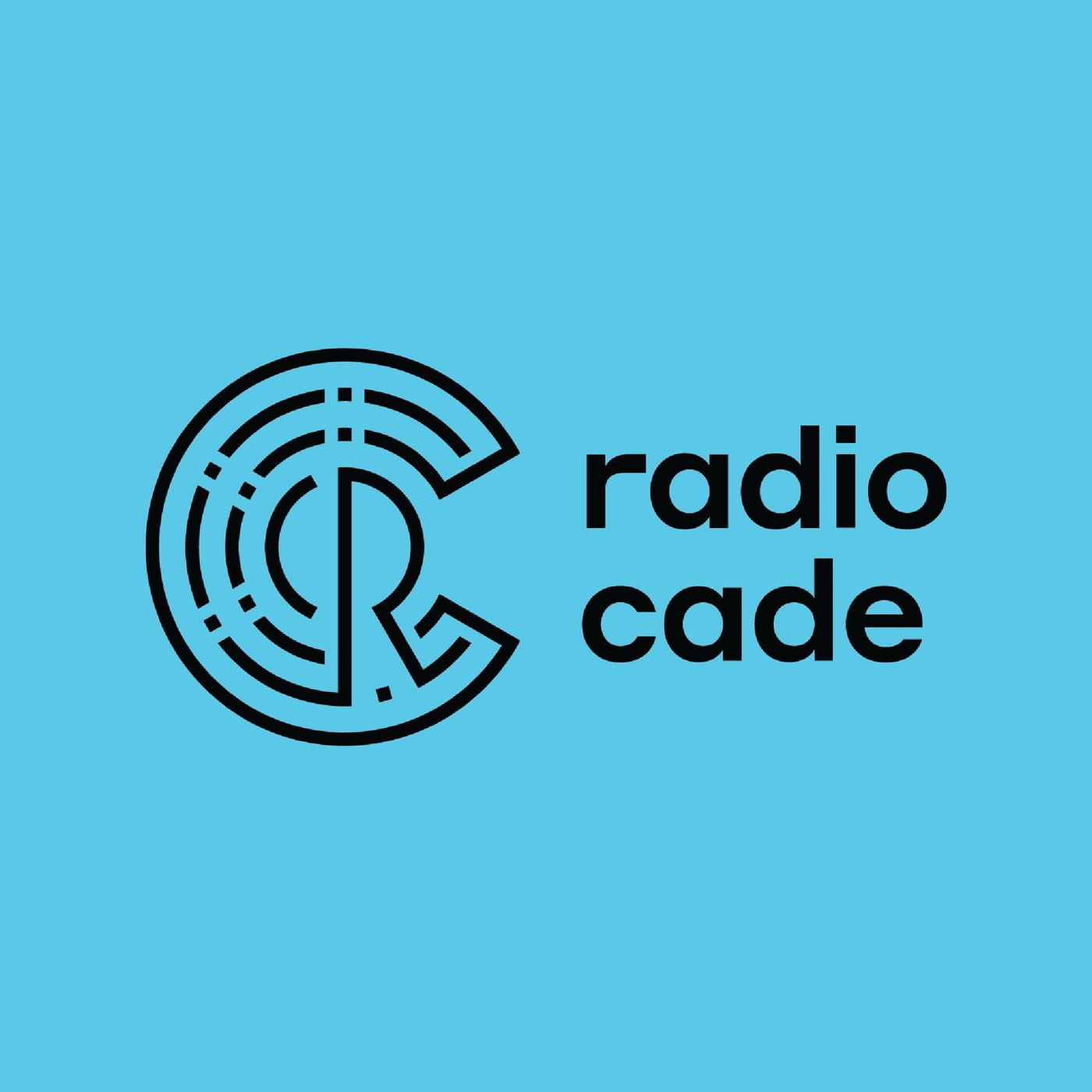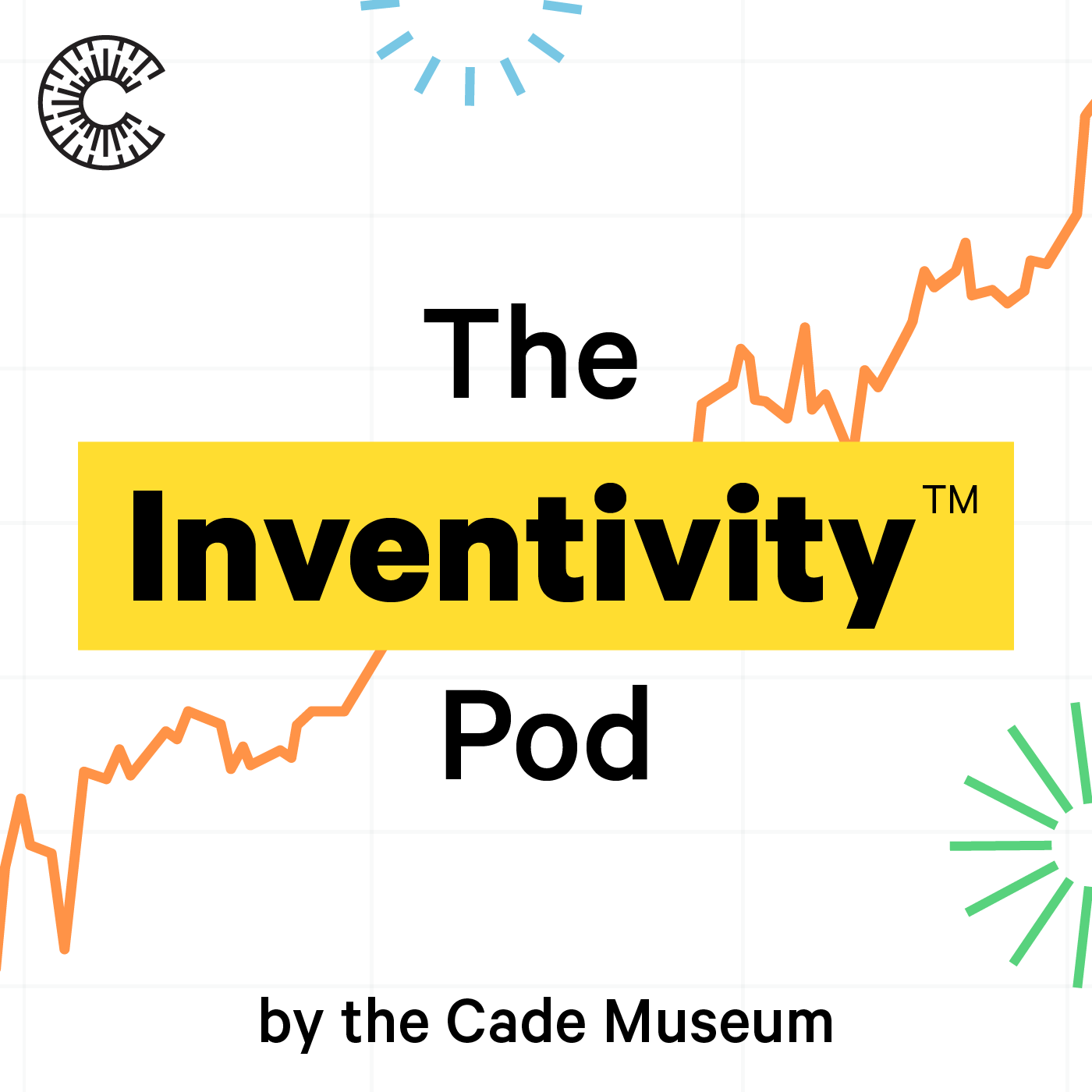Show Notes
Nine billion chickens are hatched every year in the U.S. Roy Curtiss and his colleagues came up with the idea of spray vaccinations, virtually eliminating the threat of salmonella for about one penny a chick. Always interested in genetics, Curtiss began became fascinated with pathogens and and has taught about them in various fields, including biology and dentistry. He eventually became a professor of veterinary science at the University of Florida and holds almost 50 patents.
TRANSCRIPT:
Intro: 0:20
Inventors and their inventions. Welcome to Radio Cade, the podcast from the Cade Museum for Creativity and Invention in Gainesville, Florida. The museum is named after James Robert Cade who invented Gatorade in 1965. My name is Richard Miles. We'll introduce you to inventors and the things that motivate them. We'll learn about their personal stories, how their inventions work, and how their ideas get from the laboratory to the marketplace.
Richard Miles: 0:37
Vaccinating chickens. No, that's not the name of some new indie band, but it is what may be keeping us from getting sick and here to explain this morning is Dr. Roy Curtis, a professor at the University of Florida College of Veterinary Medicine. Welcome, Dr. Curtis.
Dr. Roy Curtiss: 0:51
Glad to be here.
Richard Miles: 0:52
Okay, so it makes total sense, but I never actually have thought about giving vaccines to chickens before and I know it's, it's been around a while. It's not exactly a new thing, but tell us doctor, how does it work? Giving vaccines to chickens? Do they get a lollipop afterwards and a superhero bandaid or what is going on there?
Dr. Roy Curtiss: 1:09
Afraid not. There's no reward other than staying healthy, which of course is a pretty good reward. But chickens get immunized actually before they hatch against a virus that causes cancer, which can be devastating and that's totally controlled. And then after they come out of the shell, they're sprayed with a vaccine that protects them against bedbugs, like salmonella or viruses like bronchitis that cause devastating problems and inhibit the growth of the chickens. So before they get to the farm, they're already immunized and vaccinated.
Richard Miles: 1:41
Yes. How did this idea come about? What's sort of the history of figuring this out? I mean it seems obvious now, but all good inventions later on seem obvious. But before they were invented, they weren't so obvious. So that's why their inventions,
Dr. Roy Curtiss: 1:53
That's true. You recognize that you have viruses and bacteria that caused disease. Thirty - forty years ago. We didn't understand what the mechanism was. So the first thing to do is to figure out how do they cause disease, how do they infect, whether it's a chicken or us and what do they do to cause the symptoms that we get, whether it's diarrhea or a runny nose or whatever. Once we know that we can then begin if we understand something about the genetics to modify the virus or modify the bacteria so that it no longer causes disease, but it can still invade into a host animal like a chicken or us and cause the production of an immune response. Just like kids get vaccinated against measles, mumps, they get an inactivated virus and after a few months they develop a response so that they're no longer susceptible to infection and they're protected for life. Which is wonderful.
Richard Miles: 2:50
Let's talk about the practical application, I guess. It's one thing to vaccinate, say a single chicken or a couple of chickens, but how did the problem gets solved? How do you do this on a mass scale? It's obviously doable, but who came up with this idea of doing it on a mass scale so that you've got chickens everywhere getting vaccines?
Dr. Roy Curtiss: 3:06
One of my colleagues came up with one of the ideas of inoculating the egg before the chick hatches, what they call Inovo immunization. And my group came up with this idea of spray vaccination against the Salmonella. You have to realize we raised 9 billion chickens in the United States every year. And when they come out of the hatchery, they go into a tray of a hundred chicks and you can spray that whole box in one and a half seconds and it just goes down to like a roller thing and that each box, it goes under the spray cabinet like that, those moves on. And the next one they load them all on the truck, take them to the farm. And they do this for millions and millions of birds.
Richard Miles: 3:43
So essentially an assembly line.
Dr. Roy Curtiss: 3:45
It's an assembly line and the birds are never handled by a human being. It's all mechanical and robotics and things of this sort. And that's why we can now raise billions of chickens. When I was a kid, if you had 10,000 chickens, you were a big operator. And nowadays if you don't have 10 million you're a small potato.
Richard Miles: 4:04
So it sounds like this isn't terribly expensive system to implement or is it, is this a huge investment?
Dr. Roy Curtiss: 4:09
No, no. The cost of immunization of a chick by spray and then they give a second booster immunization in the drinking water at the broiler farm. After 10 days, it's less than a penny a chick and the chicken marketed by the rotor producer is worth about a dollar 25 cents less than 1% of the cost of the final product.
Richard Miles: 4:29
Tell us about how your research group came up with this idea, was there a key insight or was it just an inner process where you sort of arrived at the best solution.
Dr. Roy Curtiss: 4:37
In my case, it was a situation of going to a scientific meeting in immunology and learning something about how Polio vaccine worked and then knowing some things about Salmonella, which I'd worked on for many years and then realizing I could do something with chickens, which I started to raise as a kid and put all these things together as a unified concept of figuring out how to tame the Salmonella so that could no longer cause disease but could be a safe and efficacious vaccine that would protect chickens or us from future infections with Salmonella.
Richard Miles: 5:13
What was the initial reaction when you came up with this idea? Did people go, "That's a wonderful idea," or did people say "That's ridiculous, it's never gonna work?"
Dr. Roy Curtiss: 5:19
Yeah, I mean, I came up with the idea and I tried to get to the research funded three different ways through the government. Fortunately through one route it worked, and from there it went on to be accepted and being worked on by many people over the world.
Richard Miles: 5:34
Now you have a very creative mind, you've got something like 49 patents, correct?
Dr. Roy Curtiss: 5:39
Yeah. That's just the US. Several hundred in Europe and other places, Japan, China, etc.
Richard Miles: 5:47
So let's talk a little bit about, you have also a fascinating pedigree that includes a signer of the declaration of dependence, a symphony conductor, and a saloon owner. And finally you a doctor, a research doctor. So tell me about growing up in your family and what ultimately attracted you to medical research. What were your influences, or did you have role models or why did you end up the way you did?
Dr. Roy Curtiss: 6:09
Well, I think it's one of these fortuitous things. My parents decided that maybe I should get out of New York City and go upstate New York to get educated so I wouldn't become a gang member or something. And I learned how to grow vegetables. And then that led to an interest in why tomatoes were different shapes or yellow or red or whatever. And then I got interested in chickens and started raising chickens. And at the same time I was failing as an athlete because of repetitive injuries to my ankles and whatnot.
Richard Miles: 6:38
What kind of athlete?
Dr. Roy Curtiss: 6:40
Well, I did football and I did skiing and I did track and I even messed up in volleyball.
Richard Miles: 6:46
Where in upstate New York, were you?
Dr. Roy Curtiss: 6:47
Outside of Albany in a town called Delmar, New York. And I was, had a lot of interaction with many of my grandparents and great grandparents who were mostly in the New York, Connecticut, New Jersey area. So I saw them on frequent occasion and were stimulated by their stories of their progress and that of their fathers and grandfathers and grandmothers and whatnot. Resource of a very rich family life and lots of experiences.
Richard Miles: 7:13
Any other scientists in the family at all? Researchers?
Dr. Roy Curtiss: 7:17
Uh, the only researcher in the family was my oldest son who had developed remote sensing when he was at Caltech, when the total spectrum of the landsat satellites and whatnot. So anyway...
Richard Miles: 7:30
You have a patent competition going on. I see.
Dr. Roy Curtiss: 7:33
No, he's established a company and he's now retired. He's the main science advisor of it, but they started a company and they've got a lot of hardware up in the heavens there. So he's doing well, having fun.
Richard Miles: 7:45
So you're up state New York. You're learning about agriculture. And then how did you end up in Florida?
Dr. Roy Curtiss: 7:50
As many people remark, I've been all over. All over Cornell and I started going to Cornell when I was in seventh grade visiting, and it was a slam dunk that that was where I was going to go. Although all the male members of my family went to Columbia where I was born. And then I went from Cornell to Brookhaven national lab to University of Chicago to Oak Ridge National Laboratory to University, Tennessee, then University of Alabama, Birmingham, then Washington University in Saint Louis, and then Arizona State University, and then three years ago or four years ago, somebody from Florida called me up and said, Roy, what's the chance that we could move you and your wife to Florida? I said, what you got in mind? And so two months later we're out of here and looking around and we'd been here many times before and loved the environment, liked all the colleagues here and move again.
Richard Miles: 8:39
And so in all those places, was it veterinary science, or what was your focus.
Dr. Roy Curtiss: 8:44
Oh no, I've been in the arts and sciences. I mean I chaired the Biology Department at Washington University. I've been at two national laboratories, were basic science departments. I've been in a medical school, I've been at a dental school and as I say in three arts and sciences, a sanction now a vet school. And I've been doing veterinary research for 30 some odd years. So this is great. I feel very much at home.
Richard Miles: 9:05
Right. This is very interesting cause it's kind of a lot of adventures that we see and that we know of have these very wide range of interests. So they're usually highly proficient or experts in at least one field. But then beyond that they have a lot of very well developed interests. It sounds like you just studied or started teaching things that interested you and developed an expertise. Was there sort of a a grand master plan when you started out or did you just see a topic and the feeling and go that sounds interesting, I'm going to learn about it. And how did that develop?
Dr. Roy Curtiss: 9:36
Two things. One, you have to be a risk taker. You have to ask questions and when you've come across something you know nothing about, go ahead and study it. Try to figure out a little bit more. I mean learn more. And so I moved around. I mean it was one of the first people working on modes of antibiotic resistance transmission back in the early sixties for many years I studied how bacteria exchange genetic information, how they evolve, how they establish in various ecologies. And then got interested in pathogens and the genetics of how pathogens cause disease. And then once I learned that I wanted to make vaccines to prevent the infection. So it's a transition over many years of how you use your knowledge that you acquire and that imparted by others and put it to practical use.
Richard Miles: 10:20
Ah, let's develop that a little bit more because it's often very good inventions or breakthrough inventions are when somebody takes an idea or an insight developed in one field of study and applies it in a different field, or they understand that it has implications in a different field. Did that ever happen in your career in which something, an insight or a lesson that you acquired in one field, you looked over at a, at another and go, "oh my gosh, I can use that same insight and this is related but different field?"
Dr. Roy Curtiss: 10:46
Well, I think that my background in genetics, which goes all the way back to junior high school was key. Very few people saw the insight in how to understand various bacterial and viral pathogens from a genetic point of view. Trying to understand the expression of genetic information to lead to production of toxins or means by which a pathogen colonized, invaded was deceased. And so I asked a lot of questions and because of this, my lab discovered some of the key attributes of bacterial pathogenicity and means by which Salmonella invades, for example, temperature regulation and Shigella. We made the first gene clone bank of a pathogen, one causing dental caries tooth decay, streptococcus Mutans, which is one of the most prevalent pathogens in the world, affects maybe 95% of us. And we made fundamental studies on how that caused disease. Yeah. So dentistry has gone from pediatric dentistry to geriatric dentistry because we've eliminated a lot of the problems that the kids get because of the knowledge we learned about how these bacteria that cause tooth decay do so, and then we can intervene and develop strategies to prevent that.
Richard Miles: 11:55
So it sounds like this fundamental understanding of pathogens and genetics really informed your approach to all sorts of...
Dr. Roy Curtiss: 12:01
Everything. Everything.
Richard Miles: 12:02
Fascinating. Let's talk about the business angle. You know, we talked about this earlier, great ideas. Unfortunately don't just sell themselves. Right. They gotta be packaged in a business model and application. That makes sense for somebody. Either retail, consumer, a business consumer or so on. Describe for me your experience with that, knowing both worlds, sort of at the research end, at the genesis of the idea, but then also as it goes to market, what are the insights you've gained about that process? What are some of the successes and tell us about some of the setbacks or frustrations you've had in that.
Dr. Roy Curtiss: 12:35
Well, as we developed some of the key technologies in the late 1980s I commenced to be invited to go give talks at various universities and science meetings. But then during the next four years, I started visiting pharmaceutical companies and new biotech startup companies. Gene X, Seedis, Molecular Genetics, Genentech, etc. But also Eli Lilly and Upjohn and Smithkline, companies that don't exist anymore actually and did so in Europe as well. And so I gave my dog and pony show. And finally in 1992 it was a race between Smithkline and Upjohn. And Upjohn got there first with a about $3 million to let us set up a company called Megan Health, which we did, in St Louis, and established it finally in 1993 and that enabled us to develop three vaccines that are out there that are now commercially marketed by either Allanco or Merck to control salmonella in chickens and swine.
Richard Miles: 13:35
Did you encounter any skepticism or did you just present them with the information about what this was going to do? And they were like, "we're on board here."
Dr. Roy Curtiss: 13:43
Well, every time you give a talk, people ask you questions. Sometimes you've never thought of them, and many of them dealt with safety. "You tell me you're going to develop a vaccine and you're gonna give this to my newborn baby." "Yes." Now that's a tough sell. Sure. And so we had to do things and now the newer technologies we have, we have the salmonella on a string so that they die and explode. They lyse after about 10 days so that there's no survivors. So it becomes totally safe. But originally there was concern that spray a lot of salmonella around. Well, how doesn't that contaminate the environment. And what's the impact going to be on other animals? And good questions concerned with the integrity of the environment, the safety of other animals and people who might get immunized who didn't elect to get immunized, which is a no, no. From an ethical point of view. Right.
Richard Miles: 14:36
So once you figured out the answer to those questions, as you said, all good questions, you went back and said, here's why it's safe and here's why it's not going to...
Dr. Roy Curtiss: 14:45
Yes, yes. And then eventually after four years of talking to all these people, I convinced a couple of companies to say, well, okay, there may be a risk, but this is a good investment. This is a good possibility that we could enhance the safety of food if we could control salmonella in poultry.
Richard Miles: 15:02
So we mentioned earlier that you've got something like 50 us patents and sounds like a lot more overseas. What are you working on at the moment? What is your research pointing towards?
Dr. Roy Curtiss: 15:11
Well, there are two areas. One is in the area of animal health. We're developing several other vaccines for poultry, wanting to control a disease called necrotic inner riotous, which causes a devastating disease in chickens. For years they supplied low level antibiotics to promote the growth of chickens. This is now sort of a, no, no, we're trying to decrease that, but in so doing, we're now getting a disease caused by clostridium perfringens. This is a bacteria that causes gangrene, which was a big problem in the first world war and our military troops and this bacteria causes real damage in the intestinal track and the chickens don't grow well and a lot of them die. And so we got a vaccine against that, which is going through a process to be marketed in about two, three years. Hopefully. We're making another vaccine against campylobacter jejuni, which is another diarrheal pathogen that's transmitted from chickens to humans. And it turns out the chickens get infected with a strain of e coli that is very similar, if not identical to those that cause urinary tract infections in humans. And so we're trying to control that. So at four different areas we're trying to make the poultry products and other farm animal products have a safer for human consumption. But on the other hand, I work on some vaccines against human disease. My wife and I work on a vaccine against tuberculosis. We worked one on bacterial pneumonia. The vaccine for newborns that the Gates Foundation has helped to fund and a variety of other things.
Richard Miles: 16:39
Do you ever sleep?
Dr. Roy Curtiss: 16:41
Well, yeah. Then I wake up in the middle of the night and then I started thinking, you know, I love science.
Richard Miles: 16:45
I'm feeling lazier by the minute just listening to you talk, I had no idea that eating chicken could be such as dicey proposition, but I know now that every time I eat chicken and I don't get sick, I'm going to thank you.
Dr. Roy Curtiss: 16:55
No, no. It could be that you handle the chicken properly. You know, you use clean cutting board should cook things thoroughly and we don't eat sashimi chicken and there's a good reason for it.
Richard Miles: 17:05
But I think it's safe to say that the work of you and your colleagues has greatly reduced the risk of serious diseases, serious conditions affecting a lot of people.
Dr. Roy Curtiss: 17:14
No, actually I think there's very little salmonella infection that comes from eggs anymore because almost every laying hen in the United States is immunized and so that's been pretty much eliminated the last five years.
Richard Miles: 17:27
Dr. Curtiss, thank you very much for joining us on the show today and I look forward to seeing your future research, sounds very promising. Glad you could be here to talk.
Dr. Roy Curtiss: 17:35
Well thank you, Richard. I enjoyed it very much.
Richard Miles: 17:37
Thank you.
Outro: 17:39
Radio Cade would like to thank the following people for their help and support. Liz Gist of the Cade Museum for coordinating and inventor interviews. Bob McPeak of Heartwood Soundstage in downtown Gainesville, Florida for recording, editing and production of the podcasts and music theme. Tracy Collins for the composition and performance of the Radio Cade theme song featuring violinist Jacob Lawson. And special thanks to the Cade Museum for Creativity and Invention located in Gainesville, Florida.





